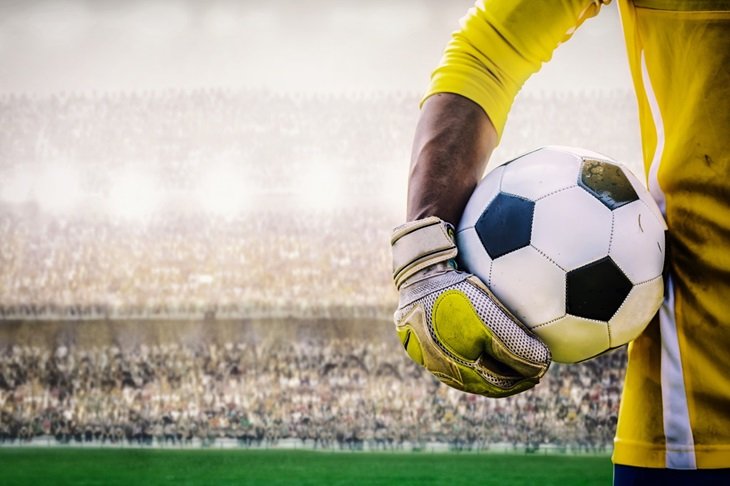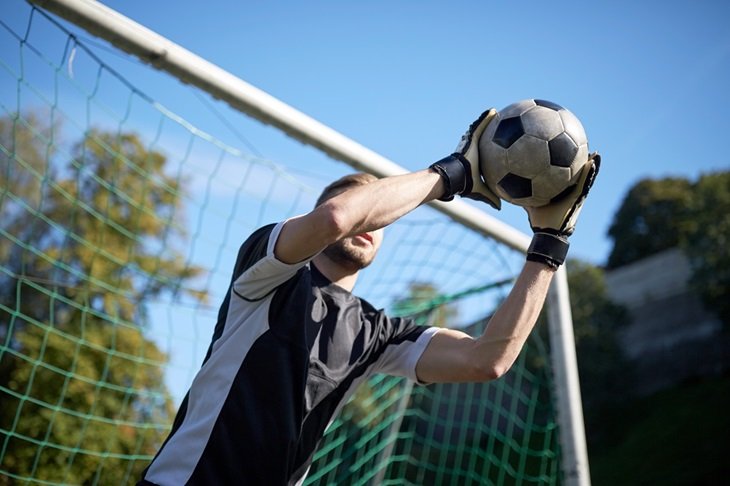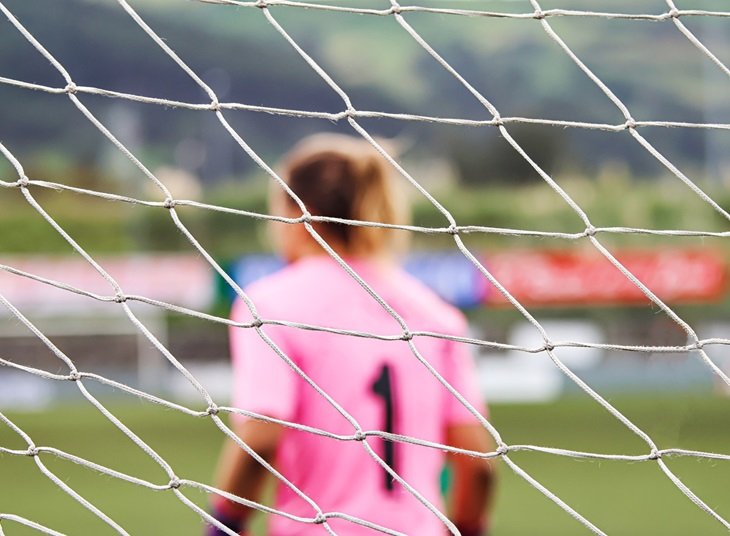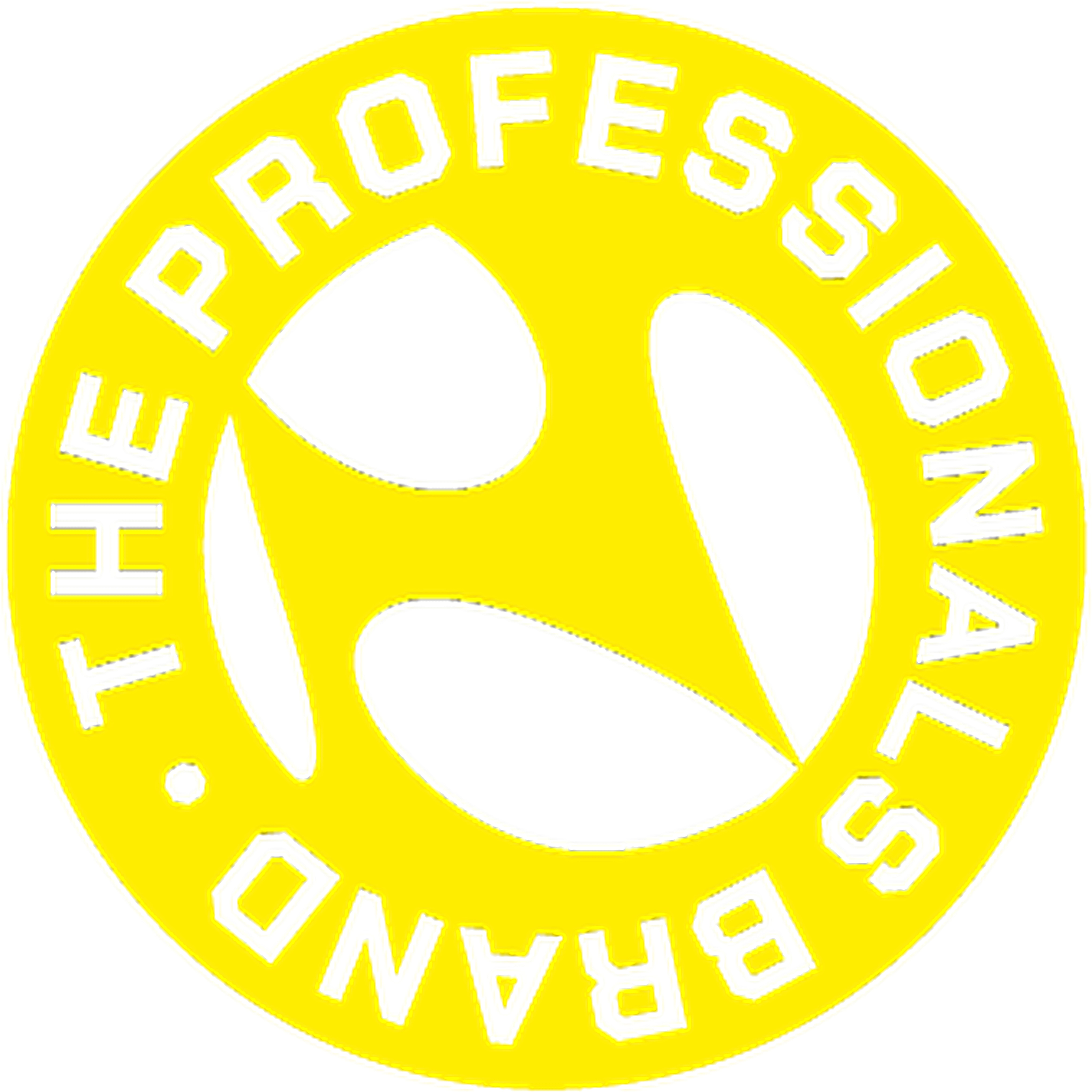
Being a goalkeeper is one of the most pressurised positions in a football team, as one mistake will likely lead to a goal for the opposition team. Goalkeepers are regularly applauded for their bravery and fearlessness as they have to throw themselves in front of the ball to be able to save a shot with any part of their body.
Bravery isn’t the only skill you need to be a good goalkeeper, however; you need to be agile, vocal and have great positioning.
In this guide, we examine the best goalkeeper training drills that coaches and managers can incorporate into their training sessions.
Advanced goalkeeper training drills
- Shot-stopping exercises
- One-on-one training drills
- High ball training exercises
- Practicing distribution
- Agility, reflex and footwork exercises
- Positioning work
- Drills to help a goalkeeper’s communication skills
Shot stopping exercises

One of the key fundamental skills for a goalkeeper is shot stopping, and as a goalkeeper coach, this will be something that will need to be worked on regularly.
A popular training exercise for shot stopping is to set-up a drill where players are shooting from a variety of distances and angles. This type of drill will help a goalkeeper focus on their positioning, decision-making, and diving technique.
It is important that coaches aim to increase the speed and unpredictability of the shots as this will help improve the reaction times and be more realistic to a real game.
As part of your shot stopping drills, you can also work on a goalkeeper’s diving technique. One way a coach can set this up is by working one-on-one with the goalkeepers and getting them to practice diving on both sides. This will help them focus on technique.
If you are training indoors or if the ground you are training on is hard, you should consider putting mats down to ensure the keeper does not get injured, especially when repeating the drills.
ALSO READ: What are the best penalty kick training drills?
One-on-one training drills
When a striker is put through on goal, it is a direct battle between the attacker and the goalkeeper. In this situation a goalkeeper must decide whether they need to close down the space, challenger for the ball or stay on their line.
Doing specific one-on-one training exercises works on the timing, decision-making and mind games for a goalkeeper.
If you are a coach or manager at an amateur or semi-professional team, then there are plenty of professional goalkeeper training drills that you use in your sessions.
A popular exercise is to place seven balls around the penalty area with your goalkeeper in the goal. Players will take turns to go one-versus-one with the keeper using the balls placed on the edge of the box.
When the ball goes dead, the player must run to the next ball, and the goalkeeper has to run and touch the goal line in his goal before facing the next attack.
High ball training exercises

A goalkeeper will likely need to face many high balls throughout a match, whether it be from a corner, cross or free kick, so planning in high ball drills for goalkeepers is vital.
Your drills should test your goalkeeper to deal with high balls under pressure, so it replicates a typical scenario during match day. By running exercises like this it will help goalkeepers practice their positioning, jumping, catching and punching as well as improve their decision-making in situations like this.
It is important that you include goalkeeper jumping drills in training sessions, and there are plenty of crossing and corner-catching exercises you can include. These exercises should involve players crossing balls in from various angles and incorporating attackers and defenders to simulate a real-life game situation.
Practicing distribution
The role of a goalkeeper has evolved massively over the past few years, and one of the best examples of this is goalkeepers needing to be good with the ball at their feet.
It isn’t only in the professional game where keepers need to be good on the ball, but at grassroot levels too, which is why it is important that distribution practice is included in training sessions.
Goalkeepers now need to start attacks effectively, and coaches and managers need to make sure their keepers are practising different types of distribution. This includes throws (both long and short), goal kicks and passing the ball out from the back.
ALSO READ: Football workouts to improve your fitness and your game
One popular training exercise that teams use is to mark targets in different areas of the pitch and ask your goalkeeper to aim for them.
Agility, reflex and footwork exercises
Goalkeepers need to be agile, have good footwork, great reflexes and superb reaction times.
To work on a goalkeeper’s footwork and agility, you can set-up agility ladders, cones, or hurdles which focuses on quick feet, balance, and their co-ordination. This will help your goalkeeper improve their movement, so they are able to get into the right position.
There are multiple drills that you can try to improve a goalkeeper’s reflexes and reactions. These include quick succession shots and deflection shooting drills, which will help keepers adjust to unexpected changes in the ball's path.
Positioning work

Half of the battle for a goalkeeper is to ensure their positioning is good. This isn’t just their positioning for shots, but their positioning for crosses, corners, free-kicks and even for sweeping up behind their defence.
Training exercises should be set-up that teach goalkeepers about narrowing down the angle for an attacker, so that the goal seems smaller, thus making it harder to score.
Drills to help a goalkeeper’s communication skills
It is so important for goalkeepers to communicate and organise their defenders with loud and clear instructions.
For example, during a free-kick drill, goalkeeping coaches should be instructing the goalkeepers to organise the wall and the defensive line they want their defenders to take in that situation.
ALSO READ: The best football gifts for Sunday league players
If you are associated with a football club, you will need to ensure that you have the correct football equipment. You can look through a range of equipment like football balls and football water bottles.
For more tips, guides, and advice, visit our news page.





